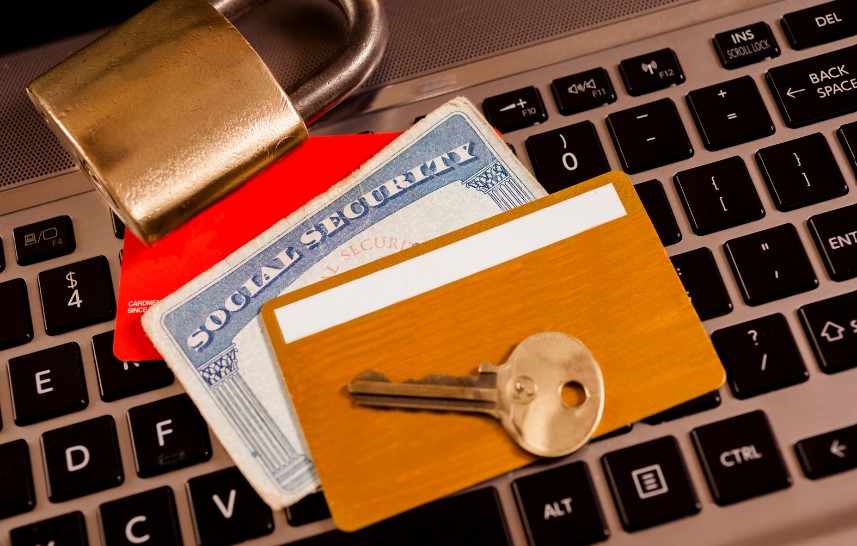
How to Fix Your Credit After Identity Theft
Discovering that your identity has been stolen can feel like a nightmare, but fixing your credit after identity theft doesn’t have to be.
Imagine waking up to strange charges on your credit card or discovering that someone took out a loan in your name. Unfortunately, this is the harsh reality for millions of people each year who fall victim to identity theft. But while discovering that your identity has been stolen can feel like a nightmare, fixing your credit afterward doesn’t have to be.
Identity theft impacts around 10 million Americans every year (source: [Federal Trade Commission]), and the aftermath can be financially devastating. From wrecked credit scores to unauthorized loans, the damage can last for years. But, as a credit repair coach with over 17 years of experience, I’ve seen firsthand how people can recover from identity theft—often coming out more financially savvy in the process.
In this guide, I’ll walk you through actionable steps to not only recover your credit but to protect your identity moving forward.
What is Identity Theft?

Identity theft occurs when someone unlawfully obtains your personal information—such as your Social Security number, bank account details, or credit card numbers—and uses it for fraudulent purposes. This can range from opening new lines of credit to making large unauthorized purchases. Hackers often target the information stored on public Wi-Fi networks, while phishing scams trick you into revealing sensitive details.
Real-Life Example: In 2022, a victim had their Social Security number stolen in a data breach, and the thief proceeded to open three credit cards in their name. Over $10,000 of debt was accumulated, and the individual spent nearly a year disputing fraudulent charges and accounts. This is the kind of real-world damage identity theft can cause.
The recovery can be time-consuming and stressful. It’s important to fully understand the process.
Common Types of Identity Theft
Financial Identity Theft: This is the most common type, where thieves use your financial information, such as credit cards or bank accounts, to make purchases or open new accounts.
Tax Identity Theft: Criminals may file false tax returns in your name and claim refunds.
Medical Identity Theft: Thieves use your health insurance information to get medical services or medications.
Criminal Identity Theft: In this case, someone might use your identity during an arrest or investigation, which can lead to wrongful criminal charges.
The Devastating Impact of Identity Theft
For most people, identity theft seems like a distant possibility—until it happens. Let me paint a clear picture:
Strange credit card charges start to appear.
Debt collection calls: If collectors start calling for debts you didn’t incur, this is a major red flag.
Your credit score drops dramatically.
Credit report discrepancies: Regularly review your credit report for unfamiliar accounts or inquiries.
Missing bills or statements: If your bills or financial statements stop arriving, it could mean someone has redirected them.
In fact, the average identity theft victim spends 200 hours recovering their identity and over $1,300 in related costs (source: [Javelin Research]). The emotional and financial toll can be overwhelming, leaving victims feeling helpless and exposed. But, by understanding the warning signs and knowing how to act, you can regain control and rebuild your financial future.
Why Identity Theft is Harmful to Your Credit
Identity theft can do severe damage to your credit score, which is used by lenders, landlords, and even some employers to assess your trustworthiness. When identity thieves open new accounts, they often miss payments, default on loans, or max out credit cards. All of this activity is recorded on your credit report, even though you didn’t authorize it, resulting in lower scores, rejected applications, and collections calls.
Here’s how identity theft can directly harm your credit:
Late Payments: Late or missed payments on fraudulent accounts will hurt your payment history, which makes up 35% of your FICO credit score.
Credit Utilization: If thieves run up charges on your credit cards, your credit utilization ratio (the amount of credit you're using compared to your limit) will increase, which negatively impacts your score.
Hard Inquiries: Each time a lender checks your credit for a new account, it causes a hard inquiry. Multiple hard inquiries in a short time can lower your score and suggest financial instability.
Immediate Steps to Take After Identity Theft

Immediate steps to take: Once you suspect or confirm identity theft, it’s important to act quickly. Here’s how:
1. Place a Fraud Alert on Your Credit Report
The first step is to place a fraud alert on your credit reports with one of the three major credit bureaus—Equifax, Experian, or TransUnion. When a fraud alert is in place, creditors are required to take extra steps to verify your identity before issuing any new credit in your name. This can help stop thieves from opening more accounts using your stolen information.
A fraud alert lasts for one year and can be renewed. When you request a fraud alert from one bureau, they are required to notify the other two, so you only need to place it with one.
How to Place a Fraud Alert
Visit the credit bureau websites or call their customer service hotlines.
Equifax: Visit their website or call 1-800-685-1111.
Experian: Place the alert online or call 1-888-397-3742.
TransUnion: Visit TransUnion’s website or call 1-800-916-8800.
You’re also entitled to a free credit report from each bureau once you place a fraud alert. This will help you track any unauthorized activity and gather information for the next steps.
2. Review Your Credit Reports
Once the fraud alert is in place, request copies of your credit reports from the three bureaus and go through them carefully. Look for any accounts or charges you don’t recognize, including:
New credit cards or loans in your name.
Hard inquiries that you didn’t initiate.
Unusual addresses or employer information that isn’t yours.
Tips for Reviewing Your Credit Report
Highlight unfamiliar items: Make a list of everything that looks suspicious so you can refer to it when disputing fraudulent accounts.
Check all three reports: Don’t rely on just one bureau’s report. Sometimes, identity theft appears on only one or two reports.
Look for minor discrepancies: Even small changes, like a misspelled name or an unfamiliar address, can signal identity theft.
3. Report Identity Theft to the FTC
Your next step is to report the identity theft to the Federal Trade Commission (FTC). Visit IdentityTheft.gov and complete the report. This will give you an official Identity Theft Report, which is crucial when disputing fraudulent accounts and dealing with creditors.
The FTC will guide you through creating a recovery plan based on your specific situation. This plan may include steps like contacting affected businesses, placing a credit freeze, or filing additional reports.
4. File a Police Report
Filing a police report may seem like an extreme step, but it’s a valuable piece of documentation, especially when dealing with creditors or disputing charges. A police report can strengthen your case when asking creditors to remove fraudulent accounts or transactions.
When filing a police report, bring the following information:
A copy of your FTC Identity Theft Report.
A government-issued ID (like your driver’s license).
Proof of address (utility bill, lease, etc.).
Any evidence of fraud, such as bank statements or collections letters.
Having both an FTC Identity Theft Report and a police report will make it easier to dispute fraudulent accounts and clear your name with creditors.
How to Dispute Fraudulent Accounts

Once you’ve reported the identity theft, the next step is to dispute any fraudulent accounts that have been opened in your name or unauthorized charges made on existing accounts. Disputing these accounts can take some time, but it’s crucial to restoring your credit.
Contact the Credit Bureaus
You’ll need to dispute fraudulent accounts with all three credit bureaus—Equifax, Experian, and TransUnion. To do this, send a dispute letter that includes:
A copy of your Identity Theft Report from the FTC.
A copy of the police report.
A clear explanation of which accounts are fraudulent.
Any supporting documents that show the fraud (e.g., account statements).
Credit bureaus are legally required to investigate your dispute within 30 days, and they must remove or correct any fraudulent information if your dispute is valid.
Notify Creditors and Financial Institutions
Next, contact the companies where the fraud occurred. Whether it’s a bank, credit card issuer, or utility company, they need to know about the identity theft. Ask them to close the fraudulent accounts and provide a copy of your FTC Identity Theft Report and police report as evidence.
Here are some additional steps to take:
Send a written dispute: While you can often start the process over the phone, follow up with a written letter for your records.
Request account documentation: Ask for copies of any paperwork or transaction records tied to the fraudulent account, so you can confirm it wasn’t initiated by you.
How to Monitor Your Credit Going Forward

Even after you've resolved the immediate effects of identity theft, you need to stay vigilant. Identity thieves may try to use your information again, or new suspicious activity could appear on your reports.
1. Sign Up for Credit Monitoring
Many companies offer free credit monitoring services that will notify you if there are any new changes to your credit report. These services can alert you to suspicious activity in real-time, giving you the chance to address issues before they cause more damage.
2. Consider a Credit Freeze
Placing a credit freeze is a powerful way to protect your credit from future fraud. A credit freeze restricts access to your credit report, meaning no one (not even you) can open a new account unless you temporarily lift the freeze. It’s free to place or lift a credit freeze with the credit bureaus.
When to use a freeze: If you don’t plan to apply for any new credit, a freeze is a good long-term solution to protect against identity theft.
3. Regularly Review Your Credit Reports
After resolving identity theft, don’t stop checking your credit. You’re entitled to one free credit report from each of the three bureaus every 12 months through AnnualCreditReport.com. Take advantage of this and review your reports carefully for any new or lingering issues.
Preventing Future Identity Theft
While there’s no way to completely prevent identity theft, there are steps you can take to reduce your risk:
1. Shred Sensitive Documents
Before throwing away any documents that contain personal information, shred them. This includes credit card statements, bank records, tax returns, and even old bills. Identity thieves often dig through trash to find valuable information.
2. Use Strong Passwords and 2FA
Make sure all your online accounts are protected by strong, unique passwords. Avoid using the same password across multiple sites, and enable two-factor authentication (2FA) wherever possible. This adds an extra layer of security by requiring a second verification step when you log in.
3. Be Careful with Public Wi-Fi
Avoid logging into financial accounts or sharing personal information over public Wi-Fi networks, which can be easily hacked. If you need to access sensitive information on the go, use a VPN (Virtual Private Network) to secure your connection.
How Long Does It Take to Fix Your Credit After Identity Theft?
Fixing your credit after identity theft can take several months to more than a year, depending on how quickly you act and the extent of the fraud. Patience and persistence are key. Here's a rough timeline:
Immediate steps (fraud alerts, credit reports, filing reports): This can be done within days of discovering the fraud.
Disputing fraudulent accounts: Credit bureaus typically take up to 30 days to investigate disputes.
Rebuilding credit: Depending on the damage, it may take six months to a year or longer to fully restore your credit score.
Conclusion: Take Action Now to Fix Your Credit

Dealing with identity theft is overwhelming, but by following the steps outlined in this guide, you can regain control of your credit and protect your financial future.
Here’s a quick recap of what you should do:
Place a fraud alert on your credit reports.
Review your credit reports and highlight any fraudulent activity.
Report identity theft to the FTC and file a police report.
Dispute fraudulent accounts with both the credit bureaus and creditors.
Monitor your credit with credit monitoring services or a credit freeze.
Take preventive measures like shredding sensitive documents and using strong passwords.
The road to recovery may be long, but with persistence and the right tools, you can restore your credit and rebuild your financial health.
Bonus Tip: If you’re overwhelmed, tools like DisputelyAI can simplify the dispute process, automatically track your progress, and help you get back on track faster.
